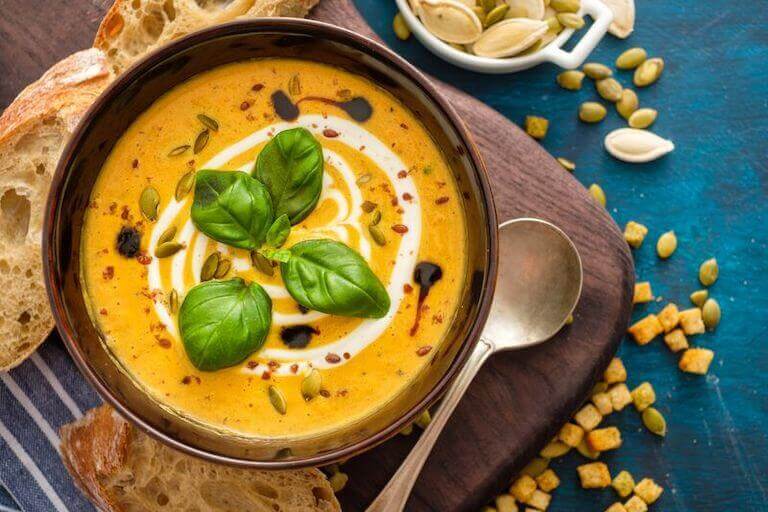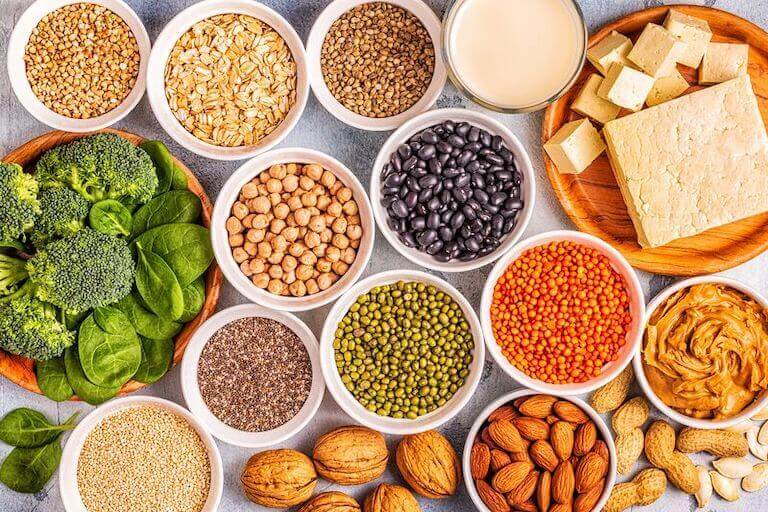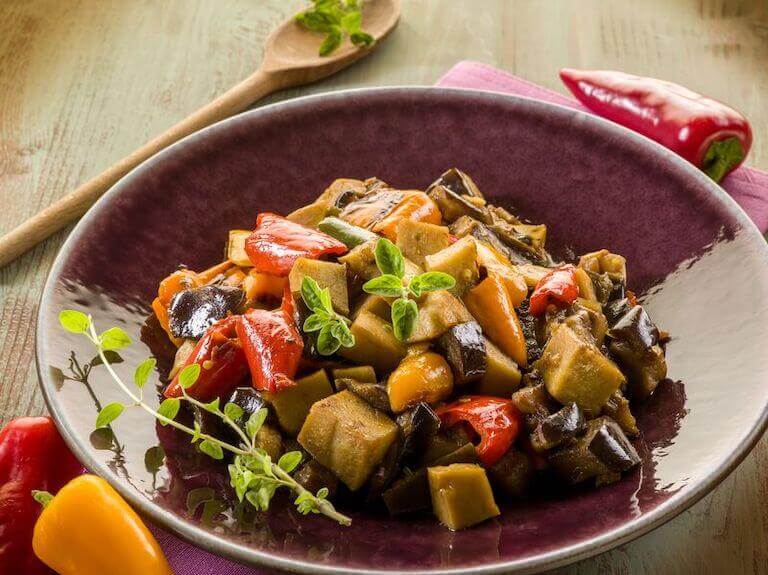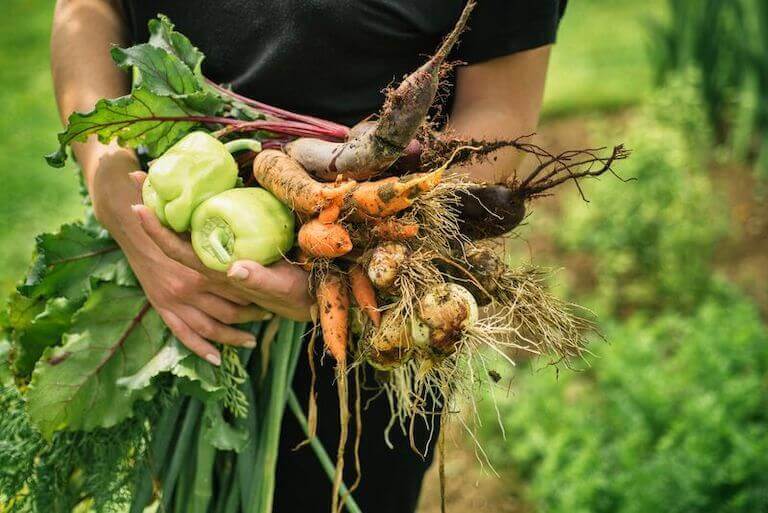Are you interested in trying a vegetarian or vegan diet, but on the fence about giving up your favorite animal products? If so, the flexitarian diet might be worth considering.
Flexitarianism is a form of vegetarianism that still allows for the consumption of some amount of meat, poultry, and fish. The biggest advantage ascribed to this diet is that, because it only limits rather than prohibits foods, it’s easier to stick with it and enjoy its health benefits over a longer period of time.
A recent analysis published by US News & World Report claimed that, out of 24 diets studied, the flexitarian diet is second only to the lauded Mediterranean diet. So, what exactly does this diet consist of? Why do people choose it? And why should chefs–and aspiring chefs–care in the first place?
What Is a Flexitarian Diet, and Why Do People Choose It?
Unlike some more restrictive dietary choices, like vegetarianism or veganism, flexitarianism focuses on exactly what its name suggests—flexibility. In theory, this makes it easier to stick with it in the long run, while still giving many of the benefits of a plant-based diet.

Flexitarian meals may include some meat, or may be entirely meat-free.
While there are different approaches to this way of eating–ranging from strict to permissive–the general idea is to limit meat consumption to only a certain amount, and to consume it only during a certain number of meals per week. The rest of the time, the focus is on plant-based eating, following a more typical vegetarian meal plan.
Dawn Jackson Blatner, the registered dietitian who coined the term in her 2009 book The Flexitarian Diet: The Mostly Vegetarian Way to Lose Weight, Be Healthier, Prevent Disease, and Add Years to Your Life, has emphasized that flexitarianism is more of a lifestyle than a diet in that it’s more about adopting a holistic, sustainable approach to food choices rather than overly restrictive eating habits.
What Are the Differences Between Vegetarian, Vegan, and Plant-Based?
While these three diets often get lumped together, each has a unique definition.
- Vegetarian: A diet that includes no meat, but may include animal byproducts like milk and eggs
- Vegan: A diet that includes no animal products, including meat, eggs, dairy, and honey
- Plant-Based: A diet that prioritizes plant-based ingredients like vegetables, grains, and nuts; may or may not include animal products
Flexitarians Enjoy a Wide Variety of Options
The main consideration when embracing the flexitarian diet is figuring out how to get enough protein. Replace the protein you would otherwise get from meat with healthy plant-based ones, like legumes (lentils, chickpeas, beans, etc.), tree nuts, seeds, or products like tofu, tempeh, seitan, or other plant-based meat substitutes. Also note that animal byproducts like eggs and dairy are permitted, which can be great non-meat protein sources.
When you do incorporate animal meat, choose lean options like chicken, turkey, or lean fish. Pork and red meat are consumed in lesser amounts, while processed meats should be avoided altogether.

Nutritious whole foods are the focus of the flexitarian diet.
Apart from that, be sure to get lots of leafy greens and other nutrient-dense vegetables and fruits, while also adding whole grains such as quinoa and brown rice.
Supplementation may be necessary to replace any potential deficiencies, specifically iron and other minerals, omega fatty acids, and some vitamins. However, all these can be obtained from careful selection of the right fruits and vegetables. It’s advised to work with a medical professional for specific suggestions on dietary supplements.
Starting the Flexitarian Diet Can Be Easy and Incremental
Getting started with the flexitarian diet doesn’t have to be daunting. Since nothing is absolutely excluded, you can work toward it gradually by adjusting the proportion of plant- and meat-based protein without ever having to cut anything out of your diet or make any abrupt, difficult changes.
Blatner’s book recommends that beginners start by excluding meat from their diet two days a week, and limiting their meat protein intake to 26 ounces for the remaining five days. From there, you can further reduce the amount of meat in your diet as you get more comfortable with this new approach.

Seitan is a great plant-based alternative protein for the flexitarian diet.
Alternatively, it’s possible to start by eliminating meat from one meal each day, replacing it with protein-rich non-meat options. Using a high-quality plant-based cookbook can be a great way to find creative, proven, meat-free meal ideas and make this transition even easier.
The bottom line is to proceed gradually, paying attention to what your body needs and ensuring your meals remain nutritionally balanced.
Many Health Benefits Are Associated with This Diet
There are many health benefits to this diet, which include the following:
- Increasing your heart health. Vegetarian diets have been shown to help lower blood pressure and cholesterol and reduce the incidence of stroke and heart disease; diets that are mostly vegetarian (like the flexitarian diet) have also been shown to have similar positive effects on heart health.
- Reducing your risk of diabetes. People following plant-based diets that focus on nutrient-dense foods are at significantly lower risk of diabetes, thanks to their reduced intake of artificial sugars and unhealthy fats, as well as their increased intake of fiber.
- Helping to lose weight. A plant-based diet may help you feel full with fewer calories; a healthy reduction in your caloric intake, coupled with exercise and other positive lifestyle choices, may help to manage a healthy weight over the long term.

The flexitarian diet is a healthy choice for both people and the planet.
Apart from the health benefits, this diet can also reduce one’s carbon footprint (because meat can be comparatively resource-intensive to produce) and can help save you money (since you may be spending less on meat products).
Why Chefs Should Care About Flexitarian Cooking
According to one study, 47 percent of Americans consider their diets flexitarian, including 54 percent of people aged 24 to 39. Flexitarianism is a widespread practice that is only growing in appeal, so it’s worth it for aspiring chefs to consider this dietary approach when designing their menus. Further, individuals who are following a flexitarian diet may not be looking specifically for restaurants catering only to vegans or vegetarians, making this approach to food relevant to chefs no matter their establishment’s overall menu.
Thinking about food from a flexitarian perspective can help you think creatively and focus on balance, both with every plate and across your whole menu.
“By adopting a more plant-centric diet, you’re going to be forced to be more creative, or you’re going to be forced to investigate ingredients that you never thought you’d cook with. And as a result, I think it’s actually kind of an expansion of your culinary capacities to cook plant-based.”*
Shane Witters Hicks, Escoffier Boulder Graduate & Private Chef/Educator, The Soulful Spread
Because the flexitarian diet is essentially a vegetarian diet, it’s all about creating balanced, nutritious meals that don’t depend on animal proteins. This can push you as a chef to draw on your skills and think critically and creatively about the food you’re putting on the plate, even if a given dish isn’t meat-free.
This kind of thinking can also lead you to create exciting menu offerings that don’t necessarily depend on meat. Meat is often the focus of dishes, which can take the pressure off the need to create inventive or compelling plant-based options. But thinking with a plant-based mentality can lead you to explore novel preparations that may help you stand out from other restaurants.
It can also push you to examine your full menu offering, considering whether you’re offering well-rounded options or your menu is too narrow. Creating a more diverse menu will help you attract and satisfy more customers.
Culinary School Can Give You Foundations in Plant-Based Cuisine
For aspiring chefs, getting a culinary degree can be a great foundation for approaching nuanced diets like flexitarianism. Establishing strong fundamental skills can enable you to think more creatively about food, and give you the experience to be confident in carrying out your ideas.
A degree in plant-based cuisine could be an ideal place to start learning about the best practices for this style of cooking and advance your dream of becoming a professional chef.
Financial aid, grants, and scholarships are available to those who apply and qualify, which can help bring the opportunity to earn a plant-based degree closer to becoming a reality.
Interested in learning more about plant-based cuisine? Check out these articles next!
- What to Know When Opening a Vegan or Vegetarian Restaurant
- What Credentials Do You Need to Be a Plant-Based Chef?
- Plant-Based Classes: A Guide to Culinary School for Vegans and Vegetarians
This article was originally published on May 15, 2019, and has since been updated.
*Information may not reflect every student’s experience. Results and outcomes may be based on several factors, such as geographical region or previous experience.

 “By adopting a more plant-centric diet, you’re going to be forced to be more creative, or you’re going to be forced to investigate ingredients that you never thought you’d cook with. And as a result, I think it’s actually kind of an expansion of your culinary capacities to cook plant-based.”*
“By adopting a more plant-centric diet, you’re going to be forced to be more creative, or you’re going to be forced to investigate ingredients that you never thought you’d cook with. And as a result, I think it’s actually kind of an expansion of your culinary capacities to cook plant-based.”*